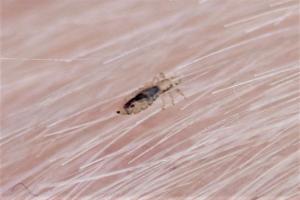Head lice
Head lice are tiny insects that live in hair. Nits are the empty egg cases attached to hair that head lice hatch from. They are a common problem in school children. They can live in the hair for a long time if not treated.
How to spot head lice

Head lice can be difficult to spot.
They're very small whitish or grey-brown insects that range from the size of a pinhead to the size of a sesame seed.
The only way to be sure someone has head lice is to find a live louse by combing their hair with a special fine-toothed comb.

This is called detection combing.
Less reliable signs of head lice include:
- small white eggs or nits (egg cases) in the hair behind the ears or at back of the neck
- an itchy scalp
- a rash on the back of the neck

- feeling as though something is moving in the hair
How to get rid of head lice and nits
Treatments to get rid of head lice are available to buy from pharmacies, supermarkets and online. You don't usually need to see your GP.
The main treatments are:
- lotions or sprays that kill head lice – these can be very effective, but some aren't suitable for pregnant or breastfeeding women, or for children under two
- removing head lice with a specially designed comb – this is suitable for everyone but needs to be repeated several times and can take a long time to do thoroughly
A pharmacist can advise you about the treatments available if you're not sure which is best for you or your child.
Make sure you carefully follow the instructions that come with the treatment you choose.
If a treatment doesn't work the first time, you can try it again, try a different treatment, or get advice from your school nurse, health visitor, pharmacist or GP.
How you get head lice
Head lice are spread by direct head-to-head contact. They climb from one person's hair to another's.
Head lice:
- can't fly, jump or swim
- are very unlikely to be spread by objects such as hats, combs and pillows
- don't have a preference for dirty, clean, short or long hair
- only affect people and can't be caught from animals
Once detached from the hair, head lice will usually die within 12 to 24 hours.
Preventing head lice
It's very difficult to prevent head lice.
You may want to consider regular detection combing, for example, on a weekly basis, if you're concerned about your children or yourself.
Lotions and sprays don't prevent head lice and should only be used if a live louse has been found in your or your child's hair.
Staying off work or school and washing clothing and bedding on a hot wash is unnecessary, as it's unlikely to help prevent the spread of head lice.
Detection combing
Detection combs are special fine-toothed plastic combs that you can buy from your local pharmacy, supermarket or online. A comb with flat-faced teeth and a tooth spacing of 0.2 to 0.3mm is best.
Detection combing can be carried out on dry or wet hair. Dry combing takes less time, but wet combing is more accurate because washing with conditioner stops head lice moving.
Wet detection combing
To use the wet detection method:
- wash the hair with ordinary shampoo and apply plenty of conditioner
- use an ordinary, wide-toothed comb to straighten and untangle the hair
- once the comb moves freely through the hair without dragging, switch to the louse detection comb
- make sure the teeth of the comb slot into the hair at the roots, with the edge of the teeth lightly touching the scalp
- draw the comb down from the roots to the ends of the hair with every stroke, and check the comb for lice each time – remove lice by wiping the comb with tissue paper or rinsing it
- work through the hair, section by section, so that the whole head of hair is combed through
- do this at least twice to help make sure you haven't missed any areas and continue until you find no more lice
If you find head lice, you should check the rest of your family. Treat everyone found to have head lice on the same day.
Dry detection combing
To use the dry detection method:
- use an ordinary, wide-toothed comb to straighten and untangle the hair
- once the comb moves freely through the hair without dragging, switch to the louse detection comb
- make sure the teeth of the comb slot into the hair at the roots, with the edge of the teeth lightly touching the scalp
- draw the comb down from the crown to the ends of the hair with every stroke
- look for lice as the comb is drawn through the hair - if you see a louse, trap it against the face of the comb with your thumb to stop if being repelled by static electricity
- comb each section of hair three or four times before moving on to the next section, until the whole head has been combed through
If you find head lice, you should check the rest of your family. Treat everyone found to have head lice on the same day.
More useful links
The information on this page has been adapted from original content from the NHS website.
For further information see terms and conditions.